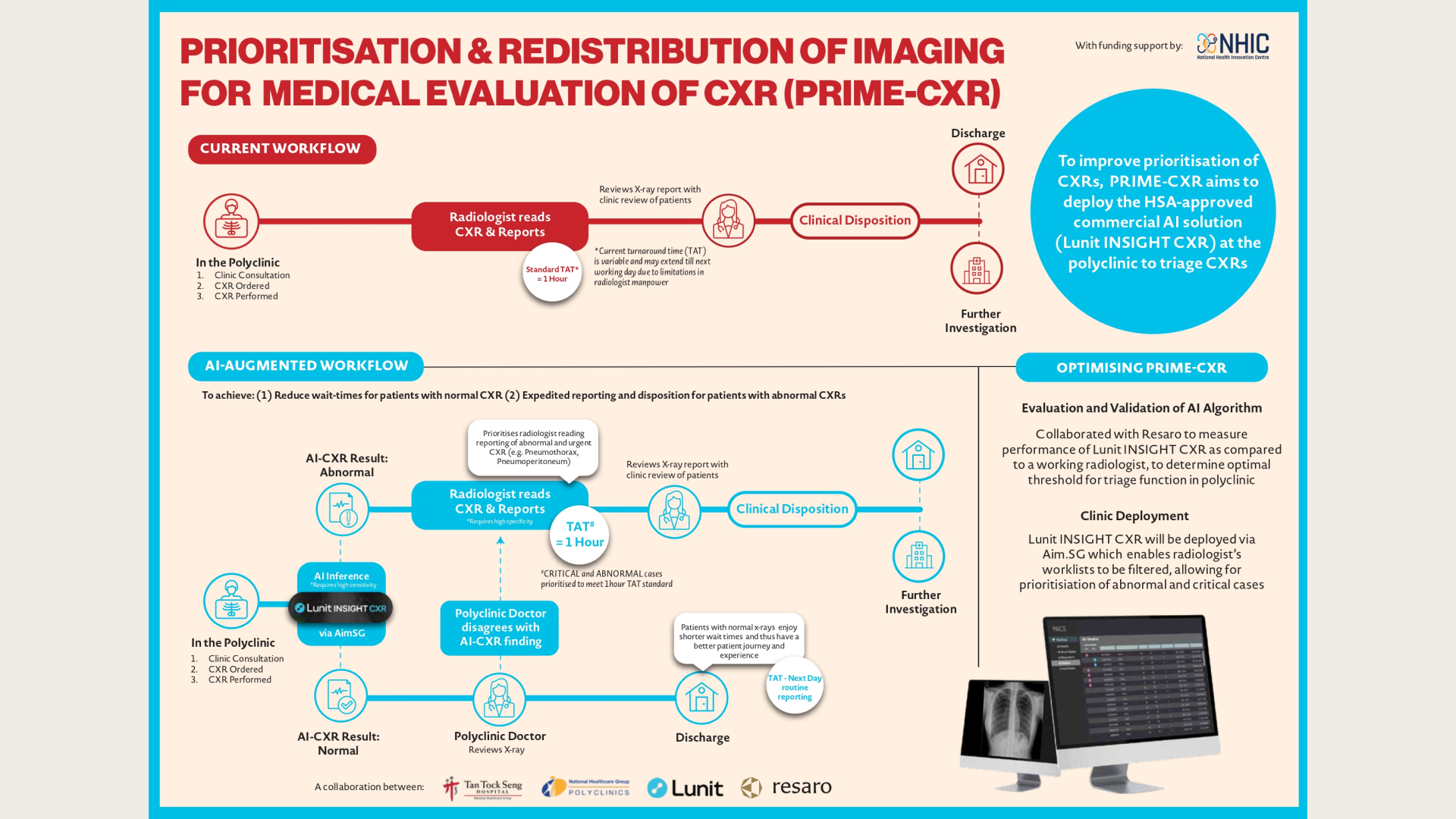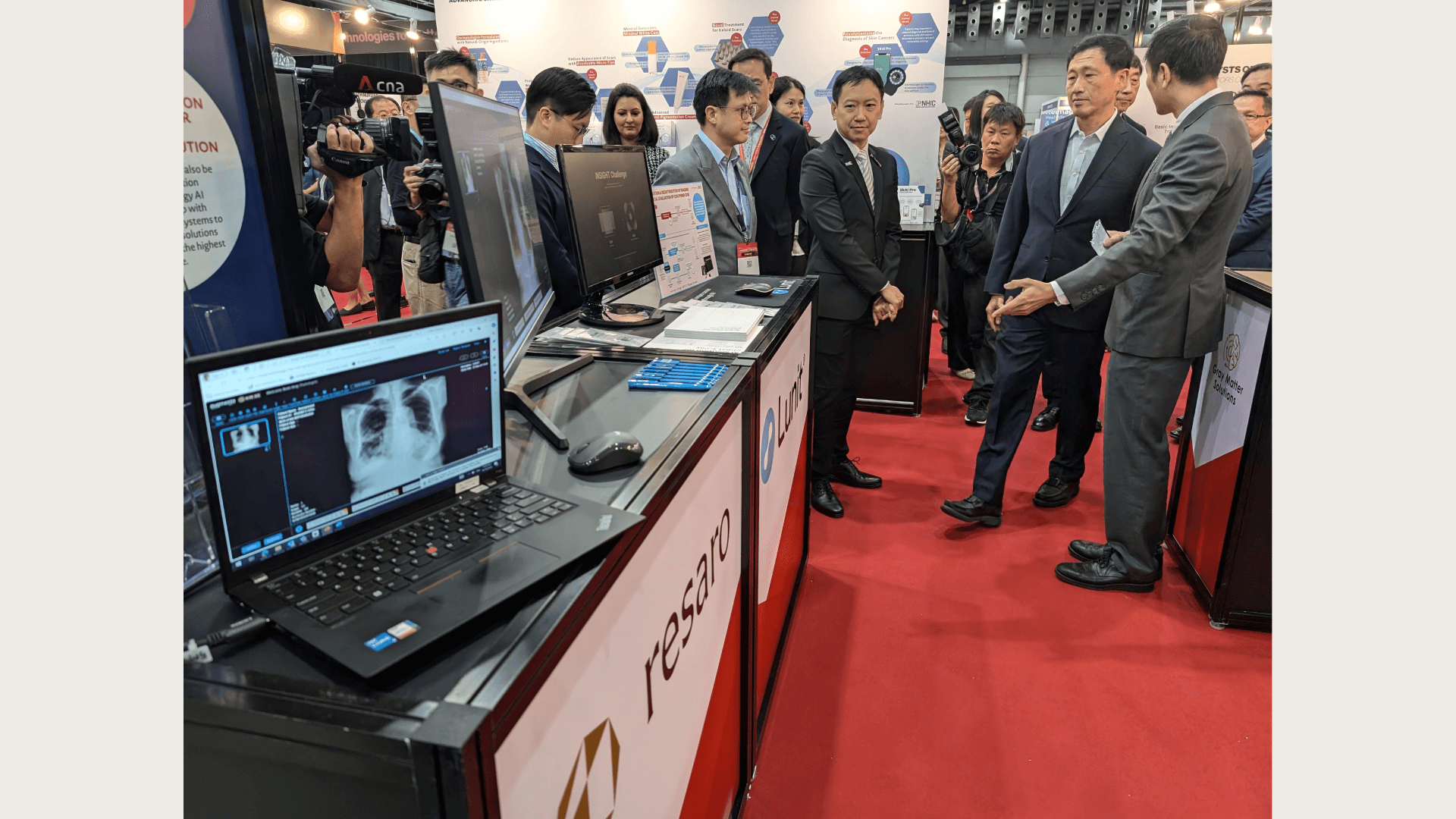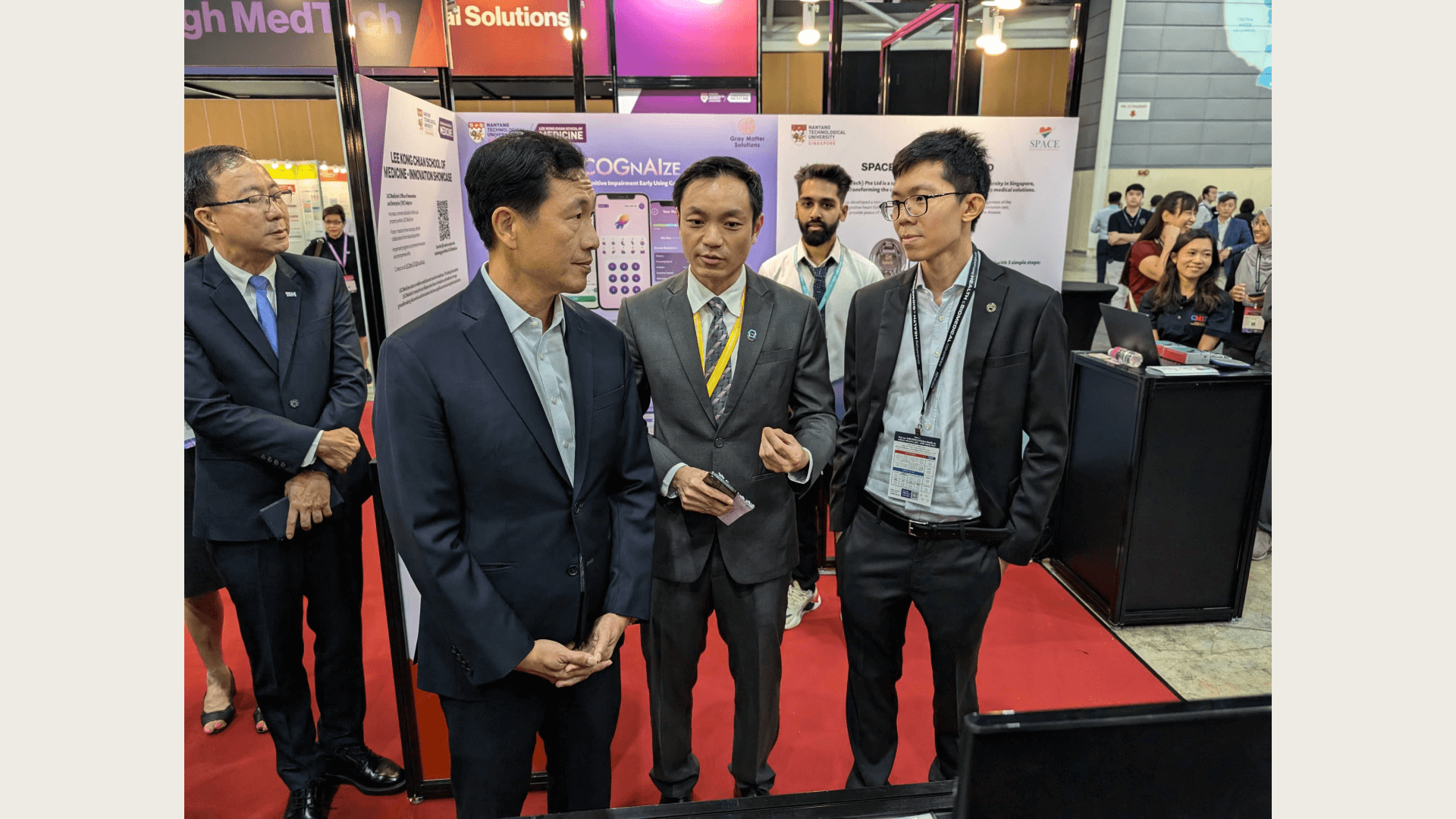Introduction
AI in medical imaging heralds a new era, where machine learning serves as a complement to human expertise, offering a "second set of eyes" to enhance the interpretation of radiological studies and improve diagnostic precision. AI algorithms have shown remarkable capabilities to quickly analyse complex imaging data and detect subtle abnormalities that might be overlooked by the human eye.
That said, the path from innovation to implementation is not without hurdles. Recent studies highlight the need for rigorous assessment of AI’s real-world effectiveness—not just its technical capabilities, but also how seamlessly it integrates into existing clinical workflows.
About PRIME-CXR
Led by the National Healthcare Group (NHG), PRIME-CXR is an initiative to speed up the review process of chest X-rays (CXRs) at National Healthcare Group Polyclinics (NHGP).
Currently, all CXRs performed at NHGP are reviewed, analysed, and interpreted by radiologists. Patients would have to wait for the review of the CXR to be completed before they are discharged or referred for further investigation in the case where abnormal findings were discovered. With imaging volumes having increased over the years, there is a need to leverage technology and innovation to complement the skillsets of radiologists to improve patient care.
The initiative uses an AI-powered CXR analysis solution called Lunit INSIGHT CXR to help enhance the diagnosis of lung and heart conditions by rapidly identifying and prioritising CXRs with abnormalities. This, in turn, reduces patient wait times for discharge or referral to higher acuity facilities.


